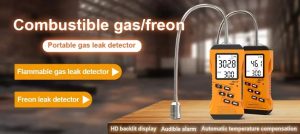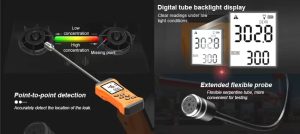Air pollution is a major problem that affects the health of millions of people worldwide. According to the World Health Organization (WHO), outdoor and indoor air pollution causes around 7 million premature deaths every year. Indoor air pollution is particularly problematic, as people spend most of their time indoors, especially in urban areas. The good news is that technology is making it easier to monitor air quality and take action to improve it. Gas sensors are a key innovation in this field, providing accurate and real-time data on the quality of the air we breathe.

Gas sensors are devices that detect and measure the concentration of gases in the air. They can detect a wide range of pollutants, including carbon monoxide, nitrogen dioxide, ozone, and volatile organic compounds (VOCs). Gas sensors are used in a variety of applications, from industrial and environmental monitoring to home and office air quality control. In recent years, gas sensors have become more affordable and accessible, making it easier for individuals and organizations to monitor their indoor air quality and take action to improve it.
One of the main benefits of gas sensors is that they provide real-time data on air quality. This means that individuals and organizations can monitor the air quality in their homes, offices, or other indoor spaces and take immediate action if necessary. For example, if a gas sensor detects high levels of carbon monoxide, which is a colorless and odorless gas that can cause headaches, nausea, and even death, it can alert the occupants of the space to evacuate and call for help. Gas sensors can also be used to monitor the effectiveness of air purifiers and ventilation systems, ensuring that they are working properly and providing clean air.
Gas sensors are also beneficial for environmental health. They can be used to monitor air quality in outdoor spaces, such as parks, streets, and industrial areas. This information can be used by city planners and policymakers to make decisions about transportation, land use, and other factors that affect air quality. For example, if gas sensors detect high levels of nitrogen dioxide in a particular area, it can indicate that there is a problem with traffic congestion or industrial emissions. This information can be used to implement measures such as carpooling, public transportation, or emissions controls to reduce air pollution.
Gas sensors can also be used to monitor the health of individuals who are at risk of exposure to pollutants. For example, people who work in industries that involve chemicals or other hazardous materials can wear personal gas sensors to monitor their exposure to pollutants and take action to protect their health. Gas sensors can also be used in healthcare settings to monitor the air quality and prevent the spread of infectious diseases.

In conclusion, gas sensors are a key innovation in the field of air quality monitoring. They provide real-time data on the concentration of pollutants in the air, which can be used to protect the health of individuals and improve environmental health. Gas sensors are affordable and accessible, making it easier for individuals and organizations to monitor their indoor air quality and take action to improve it. As air pollution continues to be a major problem worldwide, gas sensors will play an increasingly important role in monitoring and improving air quality.
 : +86 155 8830 2704
: +86 155 8830 2704 : jxdziot@gmail.com
: jxdziot@gmail.com
